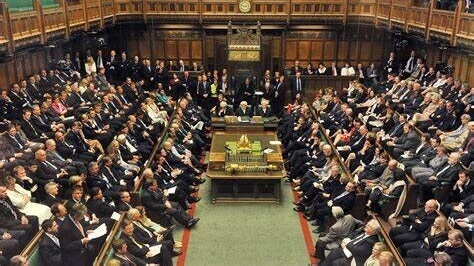With the next General Election on the horizon, it is important to be aware of party manifestos and policy proposals to ensure that you are voting for the party that best aligns with your views. In this two-part blog series, we will be discussing what education policy has looked like over the course of our current Conservative government and the potential policy changes we could see after the general election. This first part will focus on the current state of the education policy after 14 years of Conservative government.
During their tenure, the Conservative Party has emphasised a focus on the core subjects, English, Maths and Science. This has led to more students choosing to study maths and sciences, with maths having become the most popular subject at A-Level. They have also reformed GCSE qualifications to be more challenging.
However, this time has also seen a significant drop in students taking interest in the arts at school, with a 40% reduction in students taking arts GCSEs since 2010, and the number of teachers in creative subjects such as music, drama and art has also seen a considerable drop.
While education has seen relatively low austerity measures, at least compared to other sectors, this does not mean that certain areas have not been damaged by budget cuts, such as the arts and further education. Additionally, pay restraint has kept salaries low and well behind inflation rates, affecting teacher recruitment and morale. Capital spending constraints have further increased issues, with one in ten schools facing disrepair and safety concerns due to inadequate investment, impacting the overall learning environment and educational outcomes.
Notable Education Policies 2010 – 2024
Academisation
The opportunity for academy status was extended to all schools, not just those in deprived areas. Schools with ‘outstanding’ ratings were encouraged to convert, and poorly performing schools were often forced to become academies. This led to a significant increase in the number of academy schools, growing from 203 in 2010 to over 3,300 by 2013, with more than half of secondary schools becoming academies by 2015. This has also encouraged connectivity between schools within the same academy trust, creating a better network for schools. However, many previous networks that were organised through local authorities have fragmented with schools prioritising their MAT family or clusters.
Free Schools
Free Schools were introduced as state-funded institutions independent of local authority control. Over 400 Free Schools were approved between 2010 and 2015, creating 230,000 school places. However, they faced criticism for primarily benefiting more affluent areas and worsening social inequality.
Pupil Premium
The Pupil Premium was established in 2011 to provide additional funding to schools based on the number of enrolled disadvantaged pupils. This initiative aimed to reduce the attainment gap but overall had limited impact. However, it is often a good indicator of pupils that may need extra support. After 2015 the funding continued to support disadvantaged pupils, based on Free School Meals (FSM), and schools were required to use this money specifically for helping underperforming disadvantaged students and Ofsted monitored the expenditure.
Early Years Education
This program expanded access to 15 hours of free pre-school education for disadvantaged two to four-year-olds to enhance early cognitive development, though it was offset by cuts to Sure Start programs. In 2017, an additional policy provided an additional 15 hours of free childcare for working parents of 3-4 year olds, contingent on both parents working at least 16 hours a week and earning less than £100,000 per year.
Selective Education and Grammar Schools
The Conservatives supported the expansion of grammar schools through ‘annexes’ and sponsorship of failing schools. However, grammar schools increased social and economic segregation in local areas.
Curriculum and Assessment Reforms
The National Curriculum was made more academically demanding, with end-of-year exams replacing coursework. Progress 8 was introduced in 2016 to measure school performance based on student progress and the new 1-9 grading system for GCSEs was introduced in 2017.
Apprenticeships Reform
In 2017, significant reforms were introduced to apprenticeships, focusing on giving employers more control over the design and relevance of apprenticeships to their businesses and sectors. These changes aimed to add flexibility and enhance the effectiveness of apprenticeship programmes.
In the next instalment of Party Politics, find out what education policy could look like depending on the results of the upcoming General Election. What are the main differences between Conservative and Labour education policy and what are their respective big plans for the future?
Keep up to date on live election poll data:
- UK General Election Opinion Polls Tracker | The Guardian
- Election Poll Tracker | The Telegraph
- Polling | Election Maps UK
Read more on The Conservative’s Education Policies:
